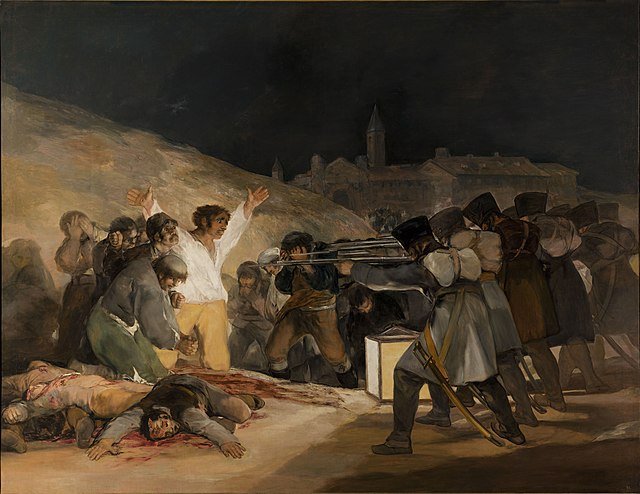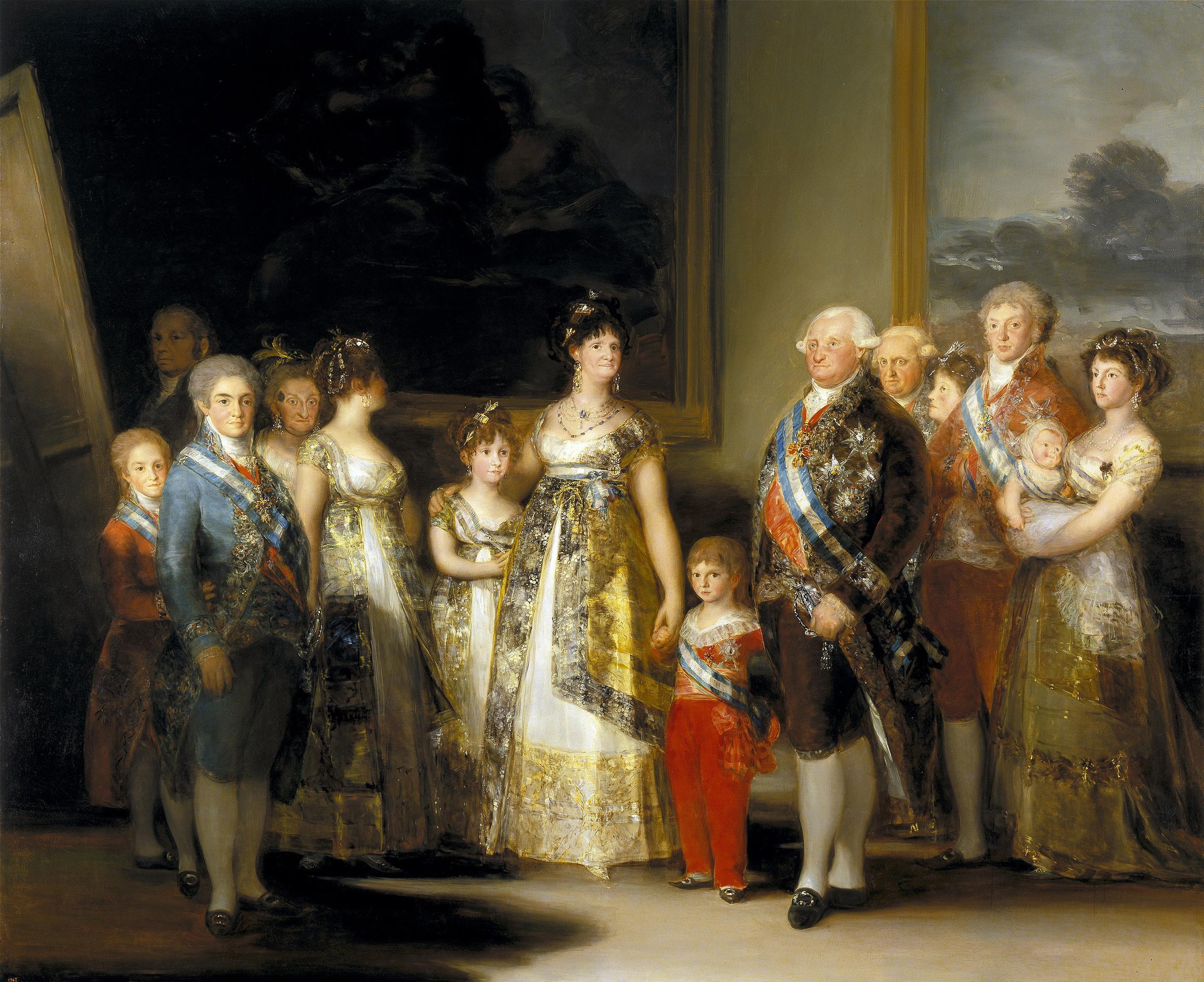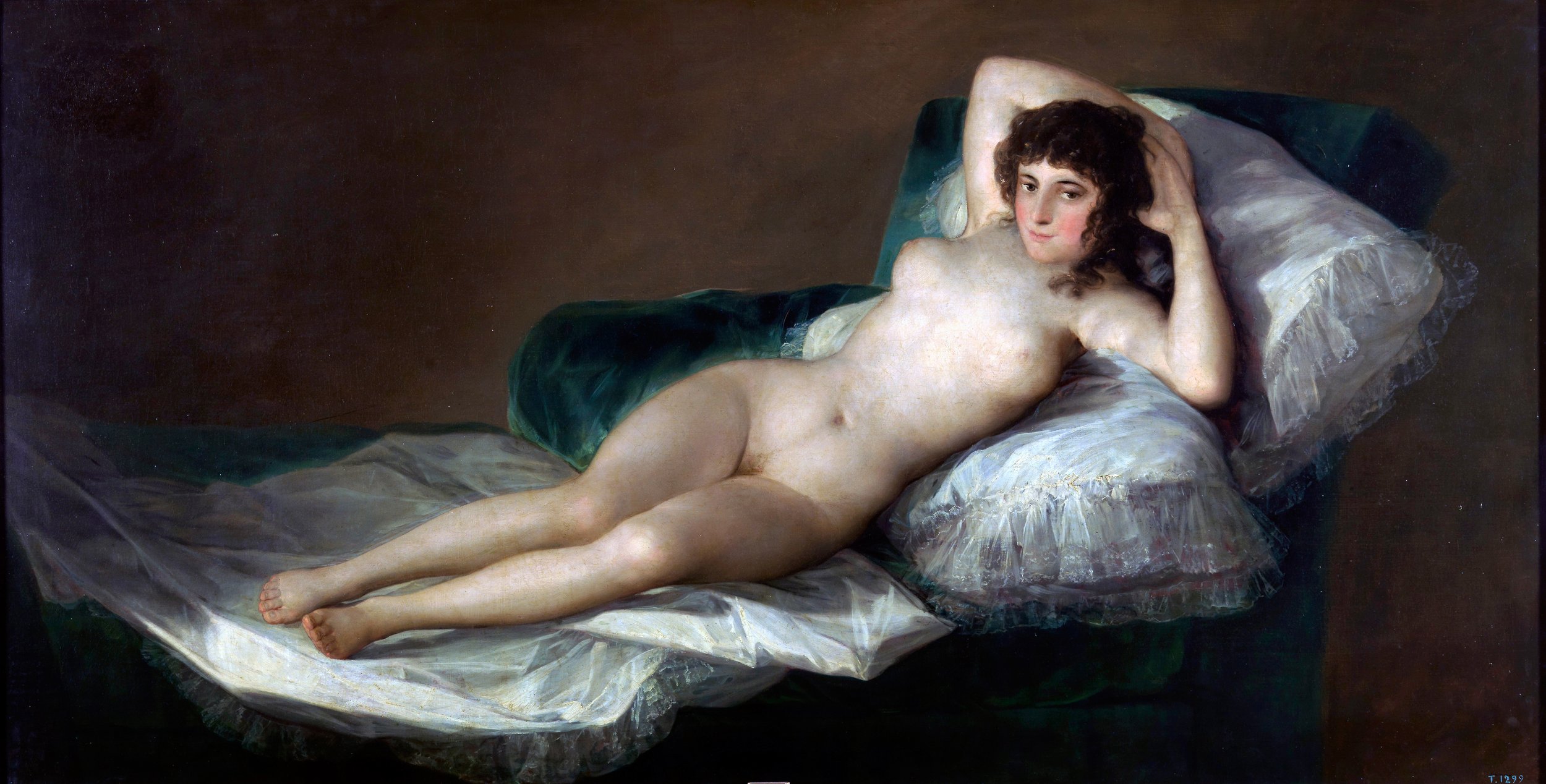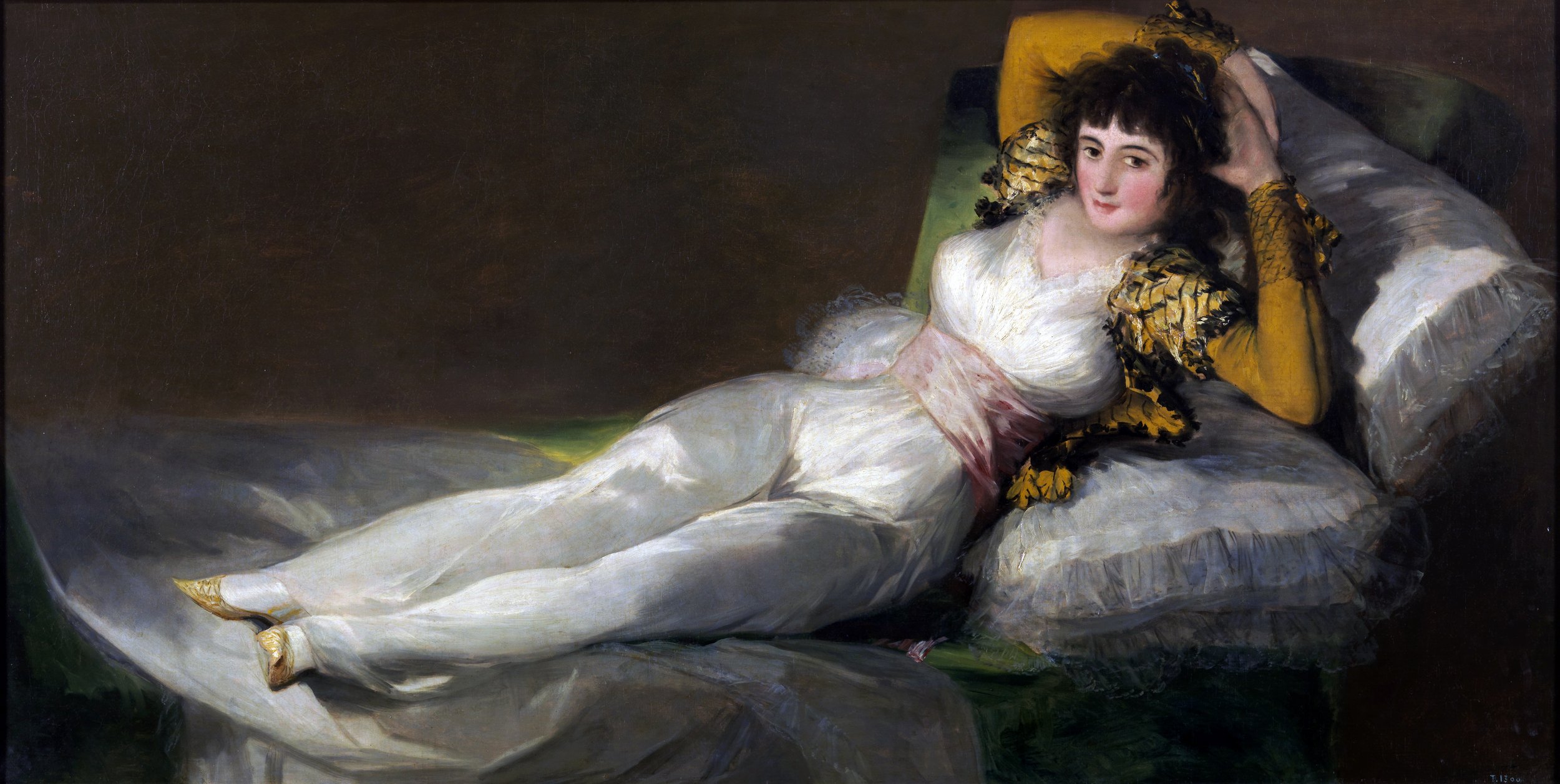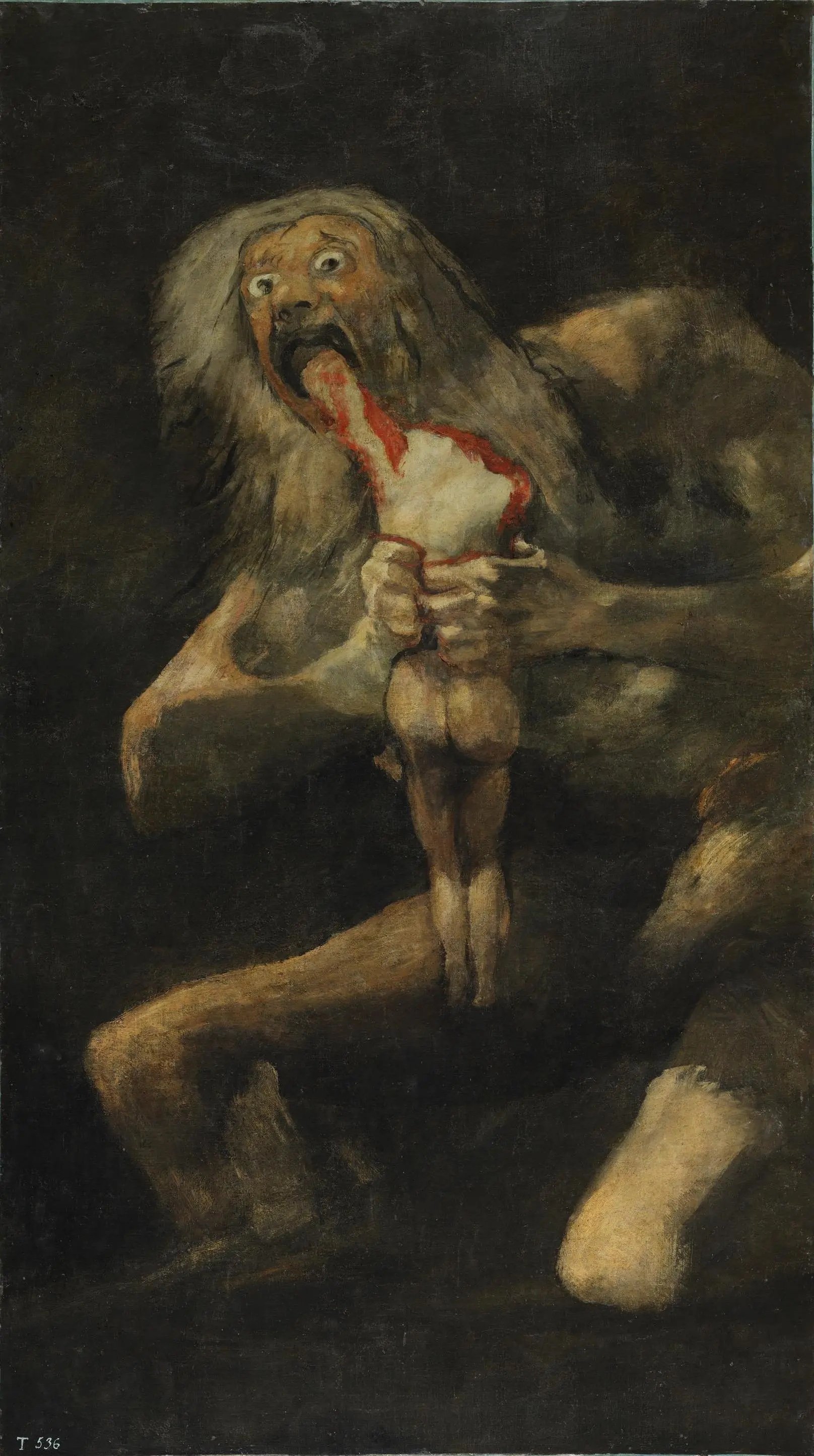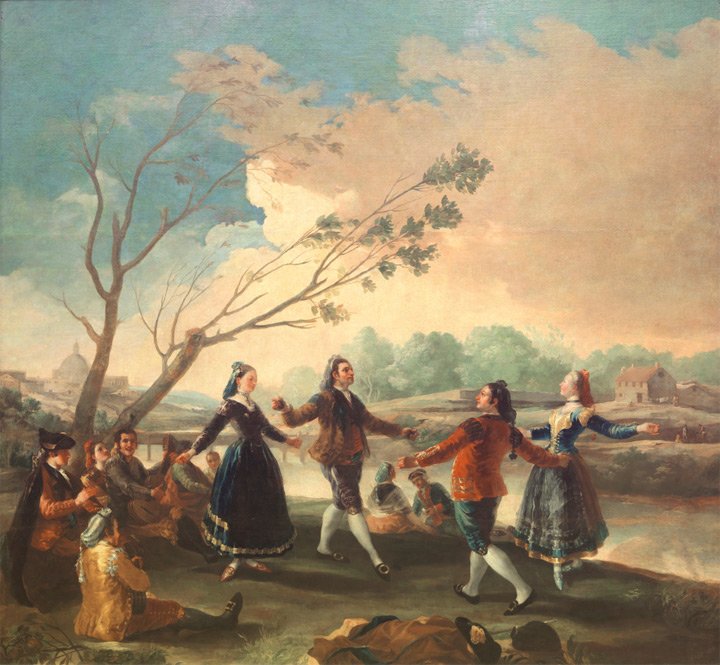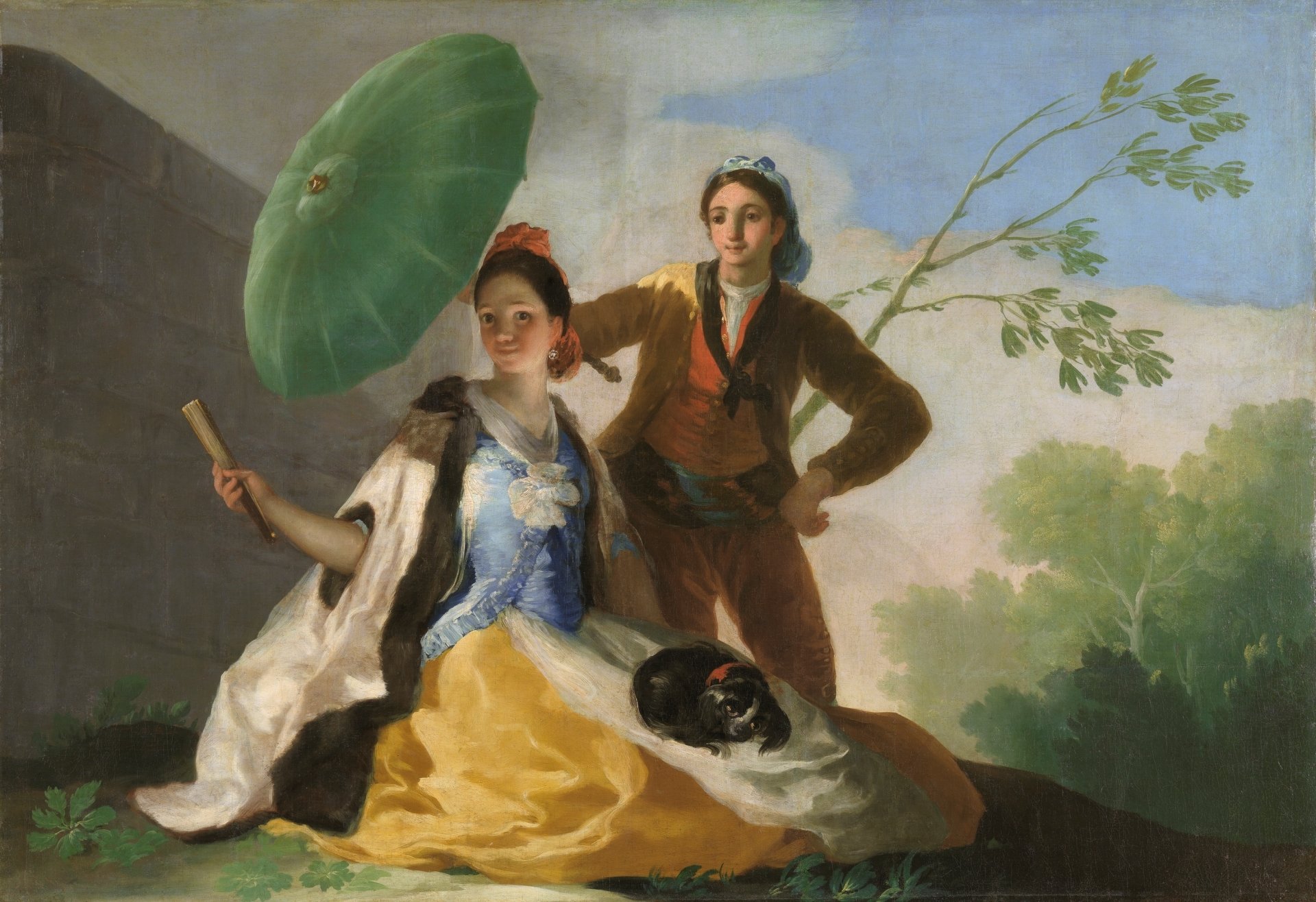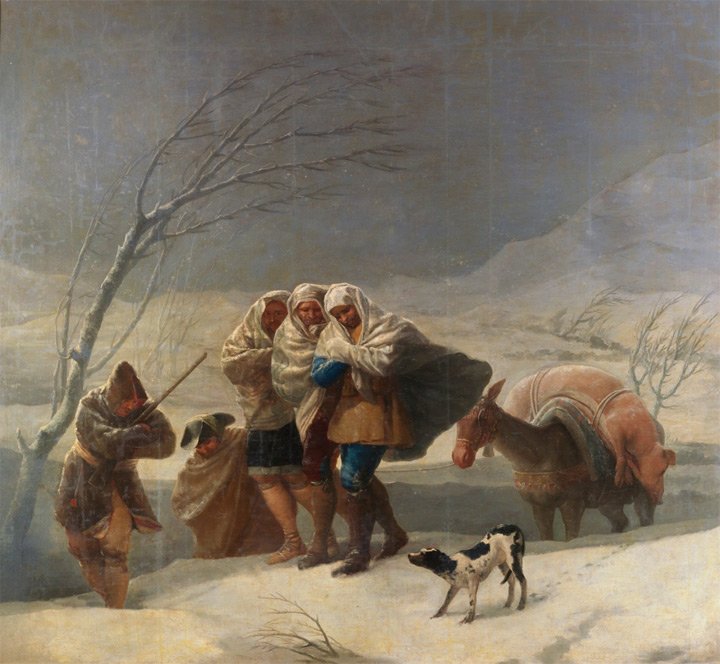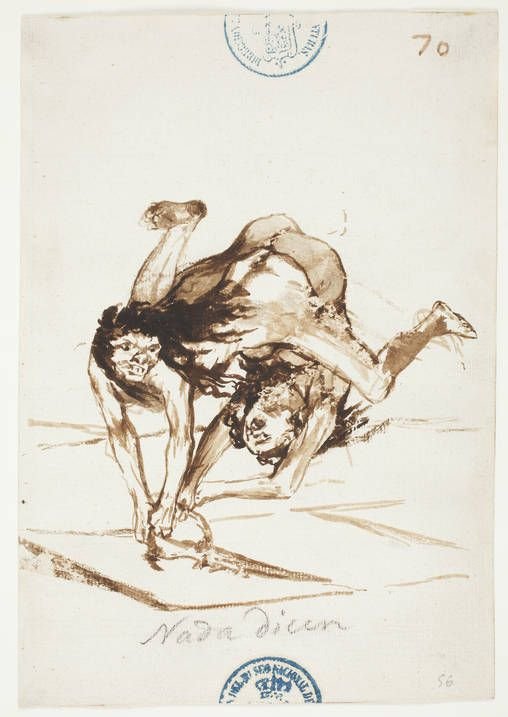The Enigmatic Goya Prado Paintings: A Closer Look at Francisco Goya's Masterpieces
Francisco de Goya y Lucientes, a trailblazer of Spanish art, has captivated audiences for centuries with his evocative masterpieces and unparalleled skill. His work serves as a vital link between the Old Masters and modern art, transcending the boundaries of conventional artistic expression and delving into the complexities of human nature. As a treasure trove of Goya’s finest creations, the Goya Prado Museum in Madrid invites art enthusiasts to immerse themselves in the enigmatic world of this influential artist.
In this journey through Goya’s life and art, we will explore his impact on Spanish art, the masterpieces that grace the halls of the Goya Prado Museum, the haunting Black Paintings, his satirical drawings and prints, and how to make the most of a visit to the Goya Collection at the Prado. So, let the fascination begin!
Key Takeaways
Francisco de Goya’s masterpieces reflect the changing power dynamics of Spain and Europe, making him one of its most influential artists.
The Prado Museum in Madrid houses some iconic works by Francisco Goya that offer insight into his life and work.
Tickets for the Prado Museum can be purchased online here with a credit card, offering general admission at 18 € and reduced rates available to students, seniors, children as well as free entry during certain times.
Goya's Impact on Spanish Art
Francisco de Goya
Francisco de Goya’s influence on Spanish art is undeniable, with his unique modernity and exploration of themes such as violence, humor, and surrealism, making him a pivotal figure in the development of Spanish painting. Born in 1746 to a family of modest means, Goya’s artistic journey began in the city of Zaragoza, where he studied under the guidance of local painter José Luzán. His talent and ambition eventually led him to Madrid, where he joined the Royal Academy of Fine Arts of San Fernando and later became a court painter, creating numerous masterpieces that are still celebrated today.
Goya’s work during his time as a court painter reflected the changing power dynamics of Spain and Europe. He painted portraits of aristocrats, middle-class citizens, and intellectuals, showcasing his rise to fame and the impact of the French invasion on his art. Goya’s brushstroke is exemplary in its ability to capture various materials, textiles, flowers, weapons, and pieces of furniture, with vibrant color and controlled technique. His ability to invest his subjects with psychological realism, reflecting both their external appearance and personal universe, set him apart from other artists of his time.
As Goya’s career progressed, his artwork became more reflective of the turbulent times in which he lived. Goya painted The Naked Maja, a daring and provocative portrait for its era, which led to his interrogation by the Inquisition and the loss of his position as court painter. However, the artist painted more pieces that continued to push artistic boundaries, culminating in his series of Black Paintings, which tackled darker themes and showcased his evolving style.
Despite the challenges he faced, Goya’s impact on Spanish art remains evident today. His work can be seen in the collections of prestigious museums worldwide, including the Museo Nacional del Prado in Madrid, where many of his most famous masterpieces reside. Goya’s exploration of the human condition, his powerful imagery, and his technical mastery continue to captivate and inspire generations of artists and art lovers alike.
Early Years and Artistic Development
The formative period of Goya’s life significantly shaped his artistic career. He:
studied at the school of the Piarist Fathers in Zaragoza, though this has not been definitively confirmed
was heavily influenced by Francisco Bayeu, a court artist in Madrid
drew great inspiration from the Italian artists of the period
was influenced by his association with the Royal Academy of Fine Arts of San Fernando
Experimenting with late Baroque and Rococo styles, Goya honed his skills and demonstrated his expertise in these artistic movements. His early patrons included the newly appointed king, who elevated him to the status of court painter, and Manuel Godoy, a formidable figure who is thought to have commissioned certain of his works. These early years laid the foundation for Goya’s unique perspective on humanity and his eventual rise to artistic prominence.
As Goya’s artistry matured, his works started mirroring his deep understanding of human nature and the world’s intricacies. He created small, violent scenes and witch depictions, as well as modern portraits for patrons, capturing the essence of each subject’s character and personality. This ability to delve into the depths of human emotion and societal issues would become a hallmark of Goya’s art, setting the stage for the powerful masterpieces he would create in the years to come.
Court Painter and Rise to Fame
Once appointed a court painter, Goya’s assignment involved crafting portraits of prominent figures in the pro-French government and the Napoleonic army. His work during this time showcased his exceptional skill in capturing the individual’s unique personal universe, while also reflecting the external appearance of his subjects. Among his most notable portraits are those of the Spanish royal family, including The Family of Charles IV, a complex portrayal of the dysfunctional aspects of the royal family.
His portraits, encompassing the aristocracy and the middle class, also displayed his mastery in varied artistic techniques like precise draughtsmanship and vibrant coloring. His ability to capture the essence of each subject, from the influential Queen Maria Louisa to Ferdinand VII and the intellectual José Vargas Ponce, solidified his reputation as one of Spain’s most talented and innovative artists.
Yet, Goya’s tenure as a court painter wasn’t devoid of controversy. His audacious painting, The Naked Maja, resulted in an interrogation by the Inquisition and consequent loss of his position as a court painter. Despite this setback, Goya continued to create groundbreaking works of art that challenged societal norms and pushed the boundaries of artistic expression. His resilience and dedication to his craft have left an indelible mark on the world of art, and his masterpieces continue to inspire and captivate audiences to this day.
Goya Prado Masterpieces
The Prado Museum in Madrid, often featured in the “diario de madrid,” houses some of the most renowned masterpieces by Francisco de Goya, inviting visitors from around the world to experience the genius of this influential artist up close. From his captivating portraits to his haunting Black Paintings, the Prado offers an unparalleled glimpse into the life and work of Goya.
Among the most iconic works on display at the Prado are:
The Third of May 1808, a powerful depiction of the execution of Spanish insurgents by French troops
The Family of Charles IV, an intimate and complex portrayal of the Spanish royal family
The Naked Maja and The Clothed Maja, two controversial paintings featuring the same model in different states of undress, sparking debate surrounding the model’s identity and the paintings’ intended purpose
Each of these masterpieces showcases Goya’s unique artistic voice and his undeniable impact on the world of art.
The Third of May 1808
The Third of May 1808
The Third of May 1808 is a heart-wrenching depiction of the execution of Spanish insurgents by French troops near Príncipe Pío Hill during the Peninsular War. Considered one of the most iconic visions of militaristic violence in art, this powerful painting captures the raw emotion and brutal reality of war, shedding light on the atrocities committed during this turbulent period in Spanish history.
Goya’s artistic techniques in The Third of May 1808 contribute to the painting’s emotional impact. He adopted a more expressive style and employed the principle of art design, unity, which resulted in a powerful and emotionally charged depiction of the events. The anguish on the faces of the victims, the cold detachment of the French soldiers, and the stark contrast between light and shadow all serve to heighten the sense of horror and despair that pervades the scene.
The Third of May 1808 has been hailed as one of the world’s first modern paintings, symbolizing the notions of martyrdom and showcasing Goya’s capacity to capture raw emotion and communicate a sense of immediacy. This monumental work stands as a testament to Goya’s artistic prowess and his ability to confront the darkest aspects of human nature.
The Family of Charles IV
The Family of Charles IV
Goya’s family portrait of the Spanish royal family, The Family of Charles IV, highlights each member’s individual character and naturalistic style. Completed in 1800, the painting portrays the dysfunctional aspects of the royal family, with some critics believing that Goya’s portrait insinuates the Queen’s immorality. The painting is considered a significant work in Goya’s career, as he was appointed as the First Court Painter during this time.
Queen Maria Louisa takes center stage in the painting, with the other members of the royal family situated around her. Goya’s distinctive style is evident in the sweeping brushstrokes and repeated splashes of color that generate a feeling of motion and energy in the painting. Unlike other royal family portraits of the time, which often presented a more idealized and formal image, Goya’s painting captures the individual personalities and dynamics within the family, lending the painting a sense of authenticity and humanizing the royal family.
The Family of Charles IV serves as a remarkable allegory of Bourbon power, as well as a representation of the Ancien Régime in comparison to the contemporary nature of power in France. The painting’s candid and realistic portrayal of the royal family offers a unique glimpse into the lives of these influential figures, demonstrating Goya’s ability to capture the true essence of his subjects.
The Naked Maja and The Clothed Maja
The Naked Maja
The Naked Maja and The Clothed Maja are two controversial paintings by Goya, featuring the same model in different states of undress. The Naked Maja depicts the woman in a state of nudity, while The Clothed Maja portrays her dressed in delicate transparent clothing and a yellow jacket with black decorations. These paintings demonstrate Goya’s skill in capturing different aspects of the same subject and have sparked ongoing debate surrounding the model’s identity and the paintings’ intended purpose.
There is much speculation about the identity of Goya’s model in these paintings, with some theories suggesting that she was the mistress of Manuel De Godoy, Duke of Alcudia, or the Duchess of Alba. Despite the uncertainty surrounding the model’s identity, the two paintings remain iconic examples of Goya’s distinct style and his willingness to push the boundaries of artistic expression.
The Clothed Maja
The Naked Maja and The Clothed Maja showcase Goya’s ability to capture the essence of his subjects, with each painting revealing a different aspect of the model’s persona. The Naked Maja, deemed revolutionary for its time, was one of the first significant paintings to show a woman completely nude in a realist style, deviating from traditional standards and eliciting controversy and outrage. These paintings serve as prime examples of Goya’s artistic prowess, challenging societal norms, and leaving a lasting impact on the world of art.
Goya's Black Paintings
Goya's Black Paintings
Goya’s Black Paintings, including the famous Saturn Devouring His Son, are a series of dark, haunting works created in his private villa, exploring themes such as God’s wrath, the conflict between old age and youth, and the passage of time. Painted directly onto the walls of his house, the Quinta del Sordo villa, these somber and evocative works provide a stark contrast to the more formal and opulent portraits that Goya produced during his time as a court painter.
One of the most disturbing and enigmatic of Goya’s Black Paintings is Saturn Devouring His Son, which portrays the myth of the Roman god Saturn, who, apprehensive that his children would overthrow him, ate them. This gruesome painting may be interpreted to represent God’s wrath, the struggle between old age and youth, or Saturn as Time consuming all things. It is believed that Goya’s version of the myth was likely inspired by Peter Paul Rubens’s Baroque portrayal of the myth, Saturn Devouring His Son (1636).
The Black Paintings:
Initially not intended for public display
Painted onto the walls of Goya’s personal villa
Later transferred to canvas
Permanently exhibited at the Museo del Prado in Madrid
Dark and introspective works
Offer a glimpse into Goya’s inner turmoil
Provide a stark contrast to his earlier, more conventional paintings
Goya’s Black Paintings serve as a powerful reminder of the artist’s ability to confront the darkest aspects of human nature and to challenge the boundaries of artistic expression. These haunting works continue to captivate audiences, serving as a testament to Goya’s enduring impact on the world of art.
Goya's Drawings and Prints
In addition to his renowned paintings, Goya also produced a significant body of drawings and prints that offer a satirical look at human vices and the absurdity of human conduct. His Caprichos series, for example, features a visual satire that reflects upon the vices of mankind and the irrationality of human behavior. Consisting of 80 prints, the Caprichos series provides a biting commentary on dishonesty, inadequate education, traditional vices, and abuses of power.
Goya y Lucientes’ drawings and prints were met with a variety of reactions from society upon their initial release. While some of his works, such as his formal portraits of the Spanish Court, were commended for their luxurious style and representation of affluence and authority, others, like his cycle of drawings titled ‘The Disasters of War,’ were regarded as harrowing and disconcerting, depicting the atrocities of battle in an unvarnished and uncompromising manner.
One notable print in Goya’s body of work is ‘The Sleep of Reason Produces Monsters,’ an enigmatic and eerie image that has captivated audiences for centuries. This print, along with the rest of Goya’s drawings and prints, defied traditional artistic conventions and elicited a spectrum of emotions and interpretations among the populace of his era.
Goya’s drawings and prints remain an important aspect of his artistic legacy, showcasing his keen insight into human nature, his biting wit, and his willingness to challenge societal norms. These works continue to captivate and inspire, serving as a testament to Goya’s enduring impact on the world of art.
Visiting the Goya Collection at the Prado
The Goya Collection at the Prado Museum in Madrid is a must-visit for art enthusiasts, showcasing a wide range of his masterpieces, from paintings to drawings and prints. With its extensive collection of Goya’s works, the Prado Museum offers a unique opportunity to experience the genius of this influential Spanish artist firsthand.
For a seamless museum visit, consider the following tips:
Familiarize yourself with the layout of the museum.
Locate the specific area where Goya’s works are displayed.
Take advantage of guided tours focusing on Goya’s works for an in-depth exploration of his art and legacy.
By following these tips, visitors can fully appreciate the genius of this influential Spanish artist and get a glimpse into the Spanish society at the San Isidro exhibition.
Ticket Information
When organizing a trip to the Prado Museum, here are some important details to keep in mind:
Buying tickets in advance is advisable.
General admission tickets cost 15 €.
Reduced admission is available for students, seniors, and children at 7,50 €.
The museum also offers free entry from Monday to Saturday between 6 p.m. to 8 p.m. and on Sundays and holidays from 5 p.m. to 7 p.m.
Tickets can be purchased here using credit card.
Navigating the Museum
A visual guide available on the museum’s website can help familiarize visitors with the Prado Museum’s layout, with a downloadable map for convenience. Goya’s works can be found in the East Gallery at the southern end of the main floor of the Prado Museum. The most practicable route to view Goya’s works is to start with his most renowned work, ‘The Third of May 1808,’ and then follow the curated routes that highlight his most significant art in the museum.
For visitors preferring guided experiences, the Prado Museum provides tours with a focus on Goya’s works. These tours provide an in-depth exploration of Goya’s artistic legacy and allow visitors to fully appreciate the depth and complexity of his art.
Summary
In conclusion, Francisco de Goya’s masterpieces and his impact on Spanish art have left an indelible mark on the world of art. His unique perspective on humanity, powerful imagery, and technical mastery continue to captivate and inspire generations of artists and art enthusiasts alike. The Prado Museum in Madrid offers an unparalleled opportunity to immerse oneself in Goya’s enigmatic world and appreciate the genius of this influential artist.
Whether you are a seasoned art lover or new to the world of Goya, a visit to the Prado Museum is an unforgettable experience. From exploring Goya’s impact on Spanish art to admiring his masterpieces and delving into his haunting Black Paintings, the Prado Museum provides a unique and enriching journey through the life and work of this extraordinary artist. So, what are you waiting for? Embark on your own voyage of discovery and witness the captivating legacy of Francisco de Goya.
Frequently Asked Questions
-
Yes, Goya is in the Prado Museum. His works are currently featured in the world-exclusive exhibition Goya: Drawings from the Prado Museum.
-
Goya is thought to have suffered from Susac's syndrome, an autoimmune disease which affects brain function, vision, balance and hearing. Alternatively, syphilis may also be a possibility.
-
Francisco de Goya y Lucientes was the dark Spanish painter who created a series of hauntingly somber works known as the Black Paintings.
-
Goya's Black Paintings, a series of dark and haunting works exploring themes such as God's wrath and the passage of time, were initially painted onto the walls of his private villa and are now permanently exhibited at the Museo del Prado in Madrid.


